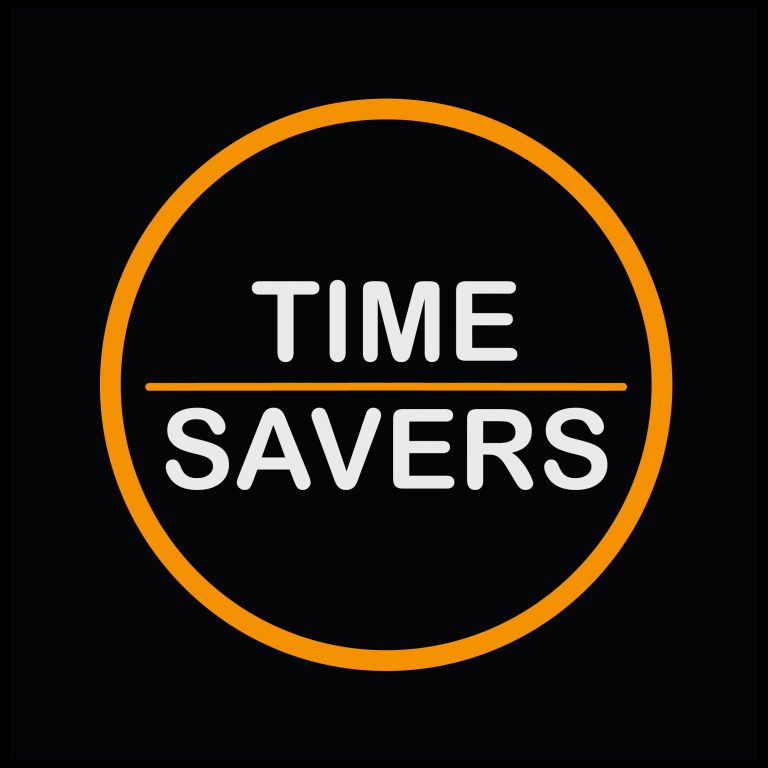Meet Our Heroes
Spiritual Wanderlust isn’t your typical online course platform. Founded by a former nun with decades of deep immersion in Catholic Contemplative tradition, this educational community exists to fill a glaring gap in the spiritual formation world: what comes after meditation 101?
While many competitors offer introductory retreats and surface-level mindfulness content, Spiritual Wanderlust goes deeper. Much deeper. Their programs, including the flagship Next Generation Mystics course and evergreen offerings like The Women Mystics School, Celtic Spirituality School, and Modern Mystics School, bring together world-class wisdom teachers and hidden gems to create rich, robust contemplative formation.
Their audience isn’t beginners. They’re helpers: pastors, spiritual directors, therapists, monks, nuns, yoga instructors, and long-time meditators who have been on the path for years and are hungry for more. Most are over 60, predominantly female, and seeking two things they can’t find anywhere else: depth and community.
At just $27 per month, Spiritual Wanderlust offers radically accessible pricing compared to competitors charging $2,000 to $3,000 for similar programs. They also offer scholarships to anyone who asks, living out their mission to make transformative spiritual education available to everyone who hungers for it.
But despite their unique positioning, world-class faculty, and devoted student base, they were struggling to scale their reach in a way that felt authentic and sustainable.
Their Goals
Spiritual Wanderlust came to us with a clear and ambitious vision: double their annual student enrollment from approximately 1,100 to over 2,200.
They wanted to launch their new program, Next Generation Mystics, with momentum in February while simultaneously building evergreen funnels for their existing courses. The timing was intentional. In the wake of a divisive election cycle, their audience was searching for models of courage, activism, and spiritual resilience. They wanted to position their mystics as spiritual ancestors who had stood up to fascism and injustice, inspiring a new generation to do the same.
Beyond the numbers, they needed a marketing approach that honored the sacredness of their work. Their audience wasn’t interested in generic mindfulness or influencer-style sales tactics. They needed messaging that respected their intelligence, spoke to their longing for depth, and reflected the contemplative, embodied, justice-oriented spirituality at the heart of Spiritual Wanderlust’s mission.
And they needed to do all of this on a modest $2,000 monthly ad budget.
The Challenge
Spiritual Wanderlust’s marketing history was a mixed bag. They had run Facebook ads before with inconsistent results. Sponsored emails were working at a benchmark cost of $20 per student, but scaling that channel was limited. Their biggest lead generation tool, the annual free Contemplative Summit, brought in waves of interest once a year, but there was no consistent funnel in place to nurture those leads or convert them into paying students throughout the year.
Their biggest challenge? Message-market fit in a crowded and confusing spiritual education space.
The spiritual growth market is saturated with surface-level content. Meditation apps, 30-day challenges, mindfulness courses, manifestation programs. Most of it aimed at beginners. Spiritual Wanderlust’s audience had already tried all of that. They were looking for something richer, more advanced, more rooted in tradition and contemplative wisdom. But how do you communicate that distinction in a Facebook ad without sounding elitist or out of touch?
Then there was the demographic reality. Their core audience was 70+, predominantly female, and not particularly active on social media. These weren’t influencer-following scrollers. They were discerning seekers who needed to be met with authenticity, depth, and clarity.
Historically, their best-performing marketing focused on the caliber of their speakers rather than pain points or transformation promises. That insight was gold, but it also meant we couldn’t rely on typical direct-response formulas. We had to lead with credibility, wisdom, and resonance.
Finally, there was the challenge of timing and targeting. Spiritual Wanderlust didn’t have a traditional lead magnet funnel. Their Spiritual Maturity Assessment and Seeker’s Guide to Mysticism course were available, but underutilized. They needed a system that could attract cold traffic, nurture curiosity, and guide people toward enrollment without feeling pushy or transactional.
We had to build a funnel strategy from the ground up, one that honored the unique nature of this audience and the sacred work Spiritual Wanderlust was doing.
Our Process
Phase One: Audience Research and Messaging Architecture
We started by immersing ourselves in the language and psychology of Spiritual Wanderlust’s community. We reviewed dozens of customer testimonials, course landing pages, and past ad creative. We studied the “words” document they provided, which captured the exact phrases their students used to describe why they joined: longing for depth, hunger for community, wanting to go beyond superficial spirituality, seeking models of feminine strength and embodied practice.
What became clear immediately was that this audience didn’t respond to hype. They responded to resonance. They wanted to feel seen, understood, and invited into something meaningful.
We built our messaging architecture around three core pillars:
- Depth Over Surface – positioning Spiritual Wanderlust as the answer to “what comes next?” after years of meditation and spiritual seeking.
- Community of Seekers – emphasizing belonging, connection, and shared journey with others who understand.
- World-Class Wisdom Teachers – leading with the credibility and caliber of the faculty, not just the transformation promise.
We also leaned heavily into the timely activist angle for Next Generation Mystics, framing the program as an invitation to step into the lineage of mystics who resisted injustice and embodied courage in dark times.
Phase Two: Funnel Design and Lead Magnet Optimization
Spiritual Wanderlust didn’t have a clear lead funnel in place, so we built one from scratch.
We repositioned their Spiritual Maturity Assessment as the primary lead magnet, a low-friction entry point that allowed cold audiences to engage, self-reflect, and receive personalized insights. This wasn’t just a quiz, it was an invitation into self-awareness and deeper formation.
We also optimized the Seeker’s Guide to Mysticism course as a bridge offer, a free or low-cost entry point that introduced people to the depth and quality of Spiritual Wanderlust’s teaching before asking them to commit to a paid program.
The funnel flow looked like this:
- Cold Traffic → Facebook ad highlighting a specific teacher or theme
- Lead Magnet → Spiritual Maturity Assessment or Seeker’s Guide
- Nurture Sequence → Email series introducing the mission, the teachers, and the transformation
- Conversion → Enrollment in Next Generation Mystics or one of the evergreen schools
We built separate funnels for each program (Next Generation Mystics, Women Mystics School, Celtic Spirituality School, Modern Mystics School) so we could test messaging and audiences independently.
Phase Three: Creative Strategy and Ad Development
Given the audience’s age and preferences, we knew video ads needed to feel grounded, not gimmicky. No influencer-style talking heads. No flashy transitions. Just warmth, authenticity, and substance.
We developed a creative approach that centered the teachers themselves. Short, thoughtful clips of guest speakers discussing themes like embodiment, activism, mystical tradition, and contemplative practice. We paired these with simple, elegant text overlays that named the longing: “What comes after meditation 101?” or “For seekers ready to go deeper.”
We also created static image ads featuring quotes from beloved mystics like Hildegard of Bingen, John of the Cross, and Julian of Norwich, paired with calls to action like “Join a community of seekers” and “Learn from world-class wisdom teachers.”
Importantly, we avoided the word “mindfulness” entirely, per the client’s guidance. This audience associated that term with superficial, commodified spirituality. Instead, we used language like contemplative practice, inner work, embodied spirituality, and mystical tradition.
Phase Four: Targeting and Testing
We built custom audiences based on interests that resonated with the Spiritual Wanderlust community:
- Richard Rohr and Center for Action and Contemplation (their audience’s favorite teacher and organization)
- Spiritual direction, contemplative prayer, Christian mysticism
- Enneagram, Thomas Merton, Hildegard of Bingen
- Social justice, embodiment practices, feminine spirituality
- Retreat centers, monasteries, and contemplative communities
We also created lookalike audiences based on past students and email subscribers, as well as retargeting audiences for people who had engaged with the Contemplative Summit or visited the website.
We launched with a modest $2,000 monthly budget, split across campaign objectives: lead generation (for the assessment and Seeker’s Guide) and direct conversions (for paid course enrollment).
We tested different hooks, teacher highlights, and pain points across ad sets, closely monitoring cost per lead and cost per enrollment. We optimized weekly, shifting budget toward the highest-performing creative and refining underperforming messaging.
Phase Five: Optimization and Scale
As data came in, we learned that ads featuring specific, high-credibility teachers dramatically outperformed generic “transformation promise” messaging. This confirmed what Spiritual Wanderlust already suspected: their audience cared more about who was teaching than what they’d get out of it.
We doubled down on teacher-centric creative, creating mini spotlight campaigns around guest speakers like James Finley, Mirabai Starr, and others. We paired these with testimonials from past students who spoke about the depth, rigor, and life-changing community they found.
We also discovered that the Spiritual Maturity Assessment was a powerful lead magnet, converting cold traffic at a cost of around $8 to $12 per lead. From there, the email nurture sequence (which we helped refine) warmed leads effectively, resulting in a healthy percentage enrolling within 30 to 60 days.
By month three, we had a repeatable system in place. Ads were consistently generating qualified leads at scale, and the evergreen funnels were producing steady enrollments beyond the seasonal Contemplative Summit push.
Results
Within the first year of working together, Spiritual Wanderlust exceeded their goal and enrolled 2,350+ students across their programs, more than doubling their baseline of 1,100.
Here’s how the numbers broke down:
- Cost per lead: Averaged $9.50 for Spiritual Maturity Assessment sign-ups
- Cost per enrollment: Averaged $22 per student, just slightly above their sponsored email benchmark and well within profitability
- Lead-to-student conversion rate: 18% from assessment to paid enrollment within 90 days
- ROAS on evergreen funnels: 4.2x across all campaigns, accounting for the low $27/month price point and high lifetime value
- Next Generation Mystics launch: 780 students enrolled in the February cohort alone, the largest single program launch in Spiritual Wanderlust’s history
Beyond the numbers, the campaigns created something more valuable: sustained momentum. The evergreen funnels continued to bring in students month after month, reducing reliance on the annual Contemplative Summit and creating a more stable, predictable revenue model.
Students reported feeling seen, welcomed, and inspired by the ads. Many said the messaging was exactly what they needed to hear in a difficult political and cultural moment. The focus on mystics as activists and models of courage resonated deeply, especially with the post-election audience.
Spiritual Wanderlust now had a marketing system that matched the integrity of their mission: authentic, thoughtful, and built for the long haul.






